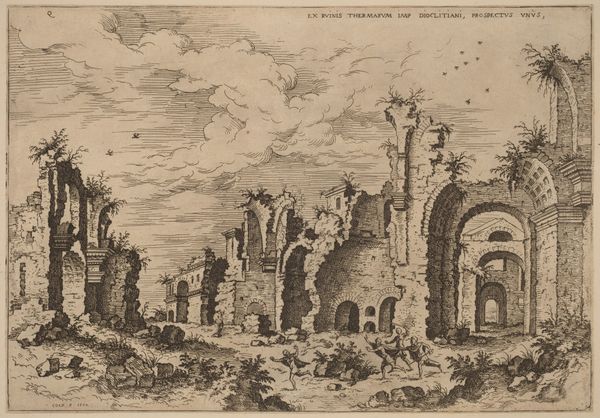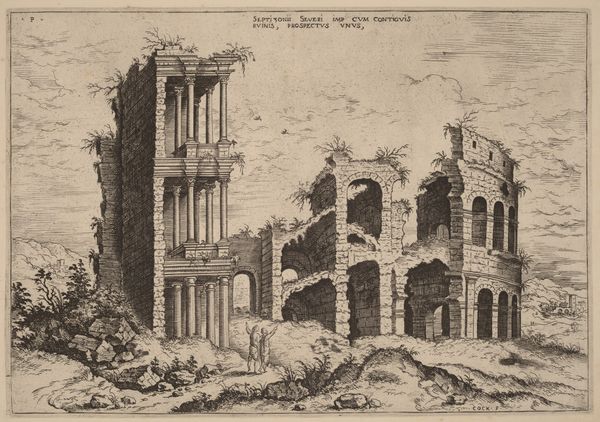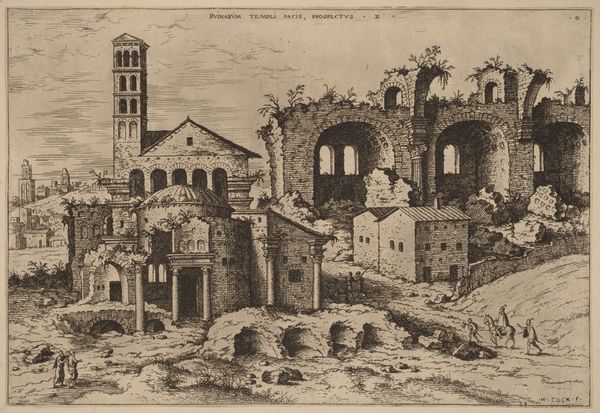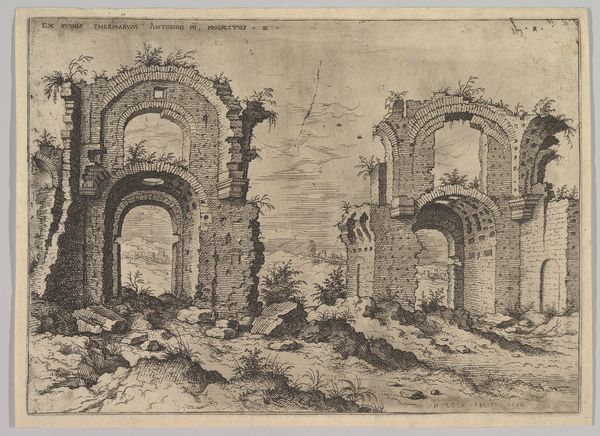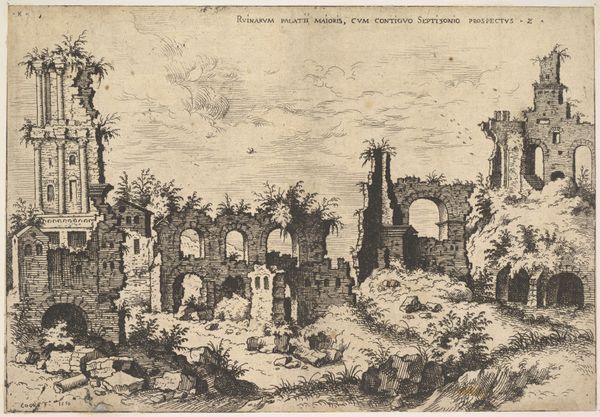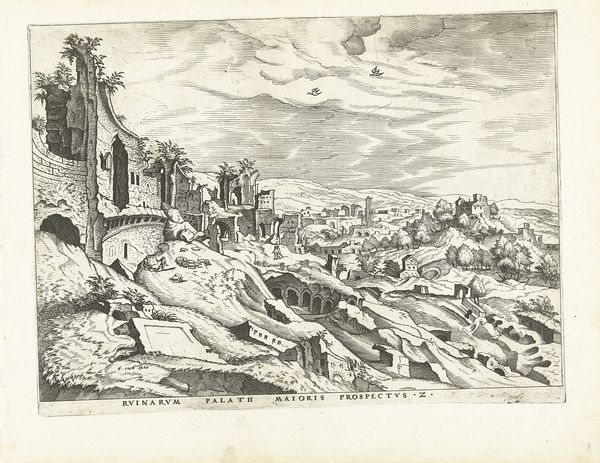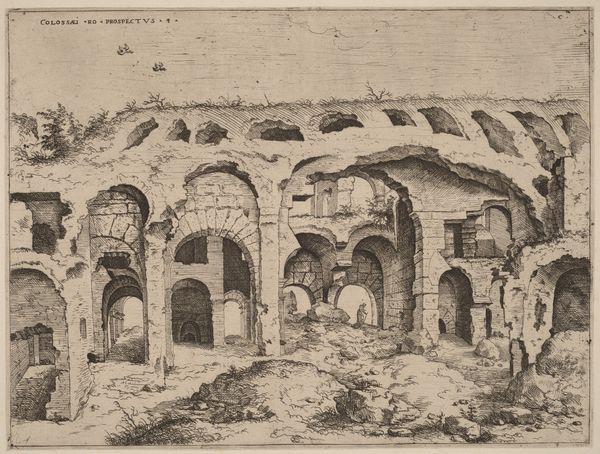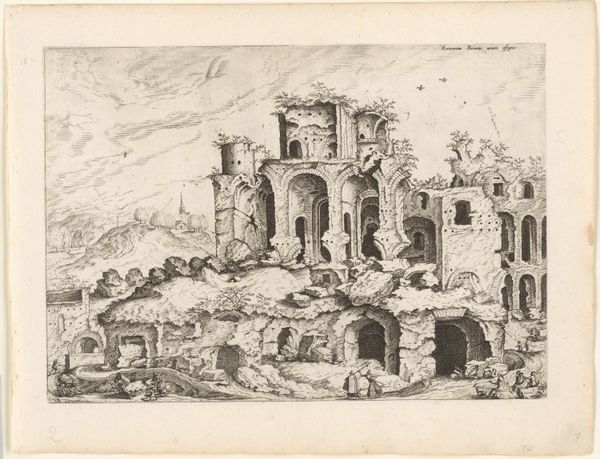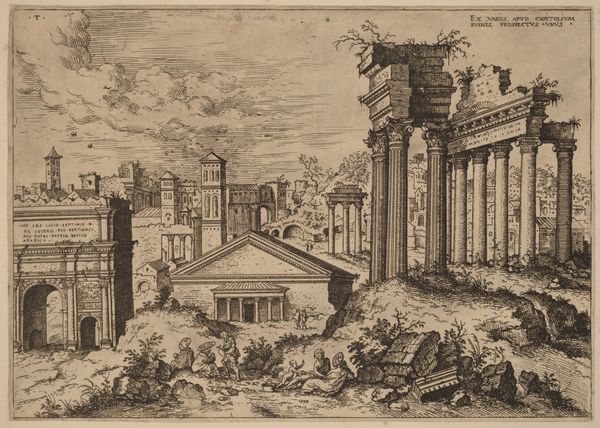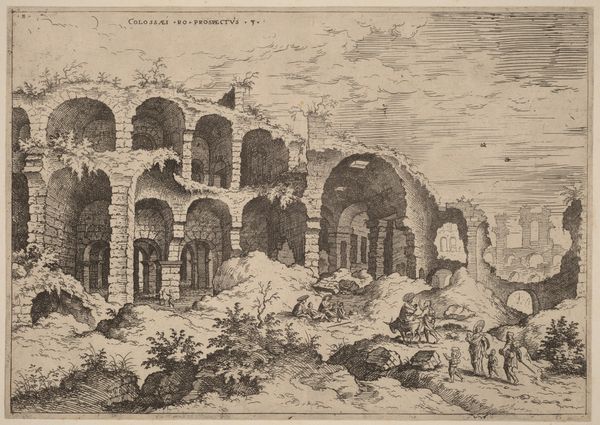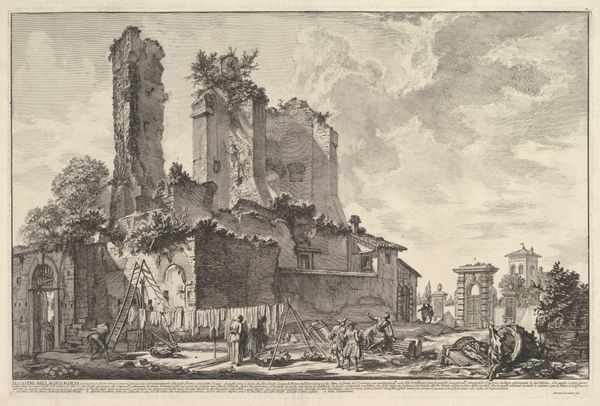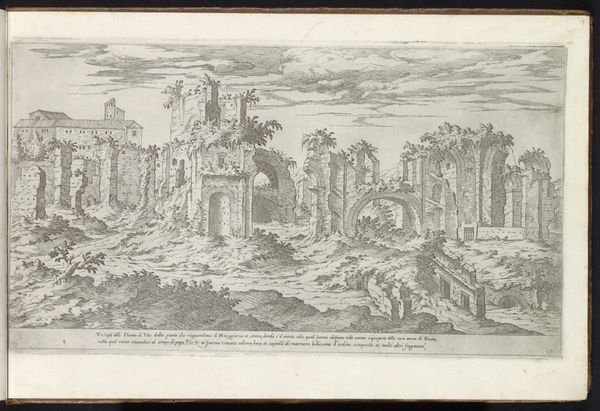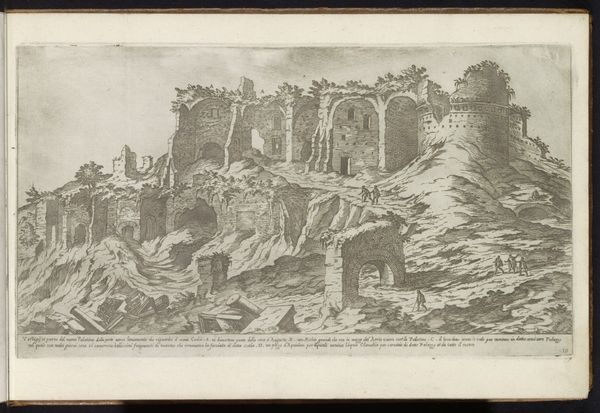
View of the Colosseum with the Palatine in the Background c. 1550
0:00
0:00
print, etching, engraving
# print
#
etching
#
old engraving style
#
landscape
#
romanesque
#
history-painting
#
italian-renaissance
#
engraving
Dimensions: sheet (trimmed to plate mark): 20.9 x 27.9 cm (8 1/4 x 11 in.)
Copyright: National Gallery of Art: CC0 1.0
This print, "View of the Colosseum with the Palatine in the Background" was made by Hieronymus Cock in the mid-16th century using etching. The process begins by coating a metal plate with a waxy, acid-resistant substance called a ground. The artist then scratches an image into the ground, exposing the metal beneath. When the plate is submerged in acid, the exposed lines are eaten away, creating an image in relief. This plate is then inked and printed onto paper. Here, the etched lines create a detailed view of the ruin, capturing the rough texture of the stone and overgrown vegetation. In Cock’s time, prints like this were a booming business, because they allowed accurate images to circulate widely. They speak to the rise of mercantile capitalism in the 16th century, when artworks became commodities, just like spices or textiles. The labor-intensive work involved in creating an etching was quite different than the labor of Roman construction. By focusing on process, we appreciate how printmaking changed our relationship to the monuments of the past.
Comments
No comments
Be the first to comment and join the conversation on the ultimate creative platform.
